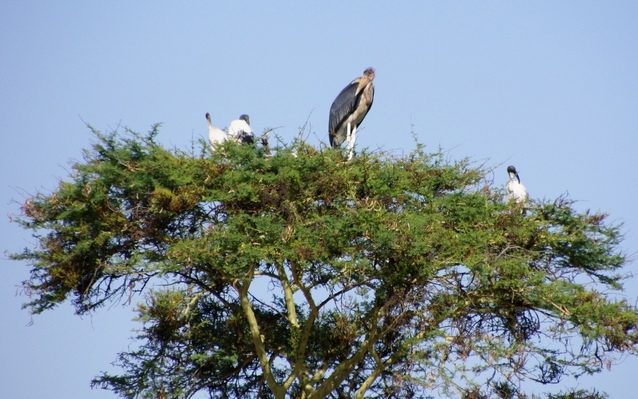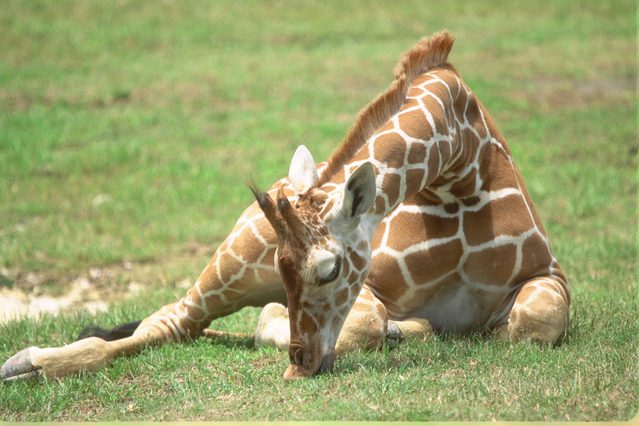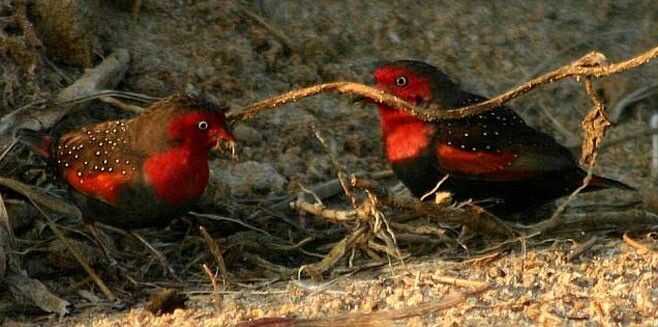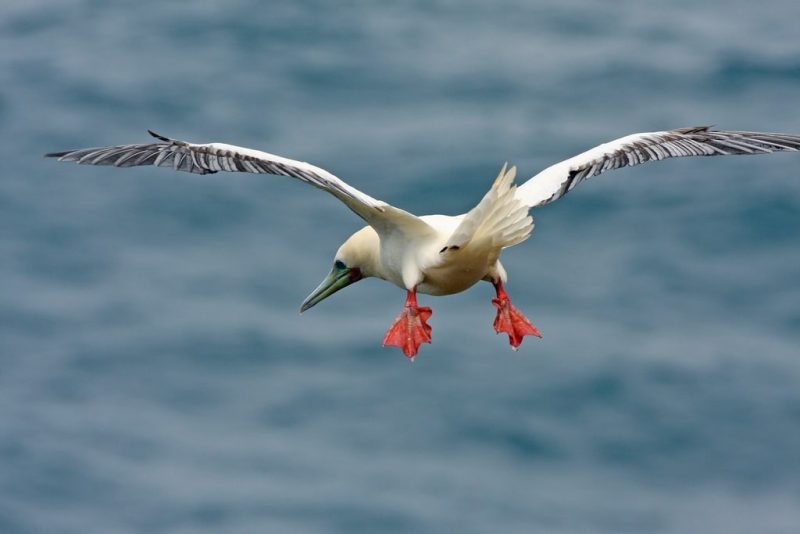Africa Beckons All Bird-Lovers
1) Forests
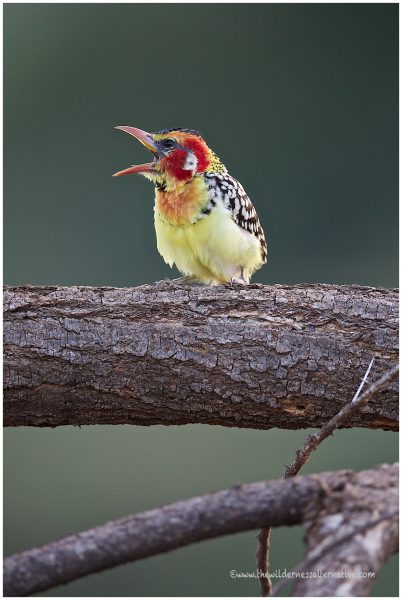
Africa Beckons All Bird-Lovers
The most threatened habitats in Kenya are the forests. They are also the most critical habitats for bird conservation because the majority of Kenya’s threatened species of birds are forest-dependent. But protection of forests is unsatisfactory for bird conservation. Only 2 of the national reserves or parks contain forest areas. The park of Mts. Kenya, Aberdares, and Elgon include little forest, as their borders begin in the moorland or upper bamboo zone.
Forest department
Most forests are under the Forest Department’s control. In the past, this department has managed areas mainly for timber production and watershed protection, which has included the replacement of the forest with exotic plantations. Biodiversity conservation has not been an aim. Consequently, severe degradation has happened in many forests, including Kakamega, Arabuko-Sokoke, Mau, and Mt. Kenya forest complex. Recently, the Forest department has started to exert greater control over the use of forests and to shift away from plantation forestry as well as the logging of indigenous timber trees. There are also signs of increasing cooperation between the Forest department and Kenya Wildlife Service. The present administrative structures still block revenue generation from birdwatching tourists in forests. By and large, they prohibit the use of forests by the surrounding communities. But if properly controlled, this could increase local commitment to the conservation of forests.
2) Wetlands
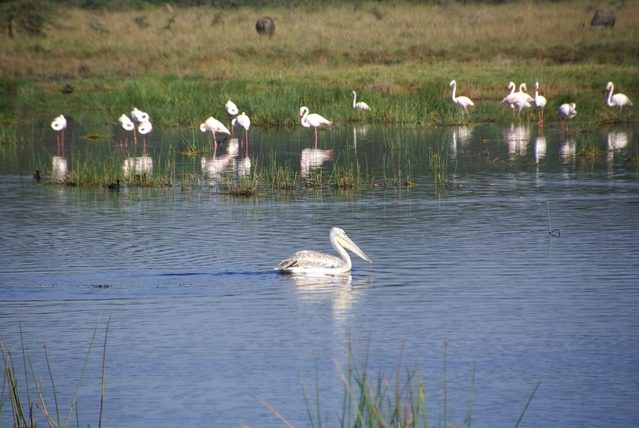 East Africa’s Rift valley lakes support large breeding populations of aquatic birds, notably lesser flamingo, white pelican, waterfowl, and wader. These lakes form part of a chain, stretching from Ethiopia to Tanzania. The major lakes are Baringo, Turkana, Bogoria, Magadi, Nakuru, Elementaita and Naivasha. The man-made waterbodies are continually rising as well. These sites need to be eventually drawn into monitoring programs. All these wetlands play wider ecological roles as fish breeding grounds and water regulators. Tidal flats and mangrove swamps at the coast harbor significant numbers of migratory and resident waders as well as other birds. The protection of wetlands is currently highly unsatisfactory. The majority of wetlands have no protection, and many are under threat. Kenya became a Ramsar Convention signatory in 1990, with Lake Nakuru as its 1st Ramsar site, which opens the way to the protection of Kenya’s most important wetlands.
East Africa’s Rift valley lakes support large breeding populations of aquatic birds, notably lesser flamingo, white pelican, waterfowl, and wader. These lakes form part of a chain, stretching from Ethiopia to Tanzania. The major lakes are Baringo, Turkana, Bogoria, Magadi, Nakuru, Elementaita and Naivasha. The man-made waterbodies are continually rising as well. These sites need to be eventually drawn into monitoring programs. All these wetlands play wider ecological roles as fish breeding grounds and water regulators. Tidal flats and mangrove swamps at the coast harbor significant numbers of migratory and resident waders as well as other birds. The protection of wetlands is currently highly unsatisfactory. The majority of wetlands have no protection, and many are under threat. Kenya became a Ramsar Convention signatory in 1990, with Lake Nakuru as its 1st Ramsar site, which opens the way to the protection of Kenya’s most important wetlands.
Bird-killing
Trading and hunting of birds, are not very severe in Kenya. The cultures of many groups discourage bird-killing. Licensed shooting does not pose a conservation problem. The Wildlife Act protects the majority of species. Geese, ducks, partridges, francolins, doves, quails, guineafowl, the smaller bustards, spurfowl, snipe, pigeons, and sandgrouse can be shot under license. Although bustards are not protected, their capture and export are banned by presidential decree. Queleas and mousebirds are afforded no protection because they are classified as pets. At present in Kenya, falconry is illegal and there is a vocal lobby for regulation changes. A thorough review is necessary, which should consider the argument that regulated falconry is a means towards raptor conservation and not a threat.
The framework
With such a complex and rich avifauna, Kenya has equally complex responsibilities. Tackling bird conservation demands appropriate instruments and skilled people. Although both are available in Kenya, they are inadequate in number and strength. The energy devoted to bird conservation and study in Kenya is amateur. An Ornithological sub-committee under the East Africa Natural history society collates and publishes a yearly bird report. Records of vagrant and rare bird species in the region are screened by an authoritative panel. It is also worth mentioning that many international conservation organizations have their offices in Kenya. A considerable concentration of conservation concern and experience thus exists in Kenya. Of course, the environmental concerns in Kenya extend much further than birds alone. Nonetheless, there are good enough reasons to concentrate on birds. A strategy to conserve birds should form part of an overall strategy for smart use of the environment.
Bird tourism
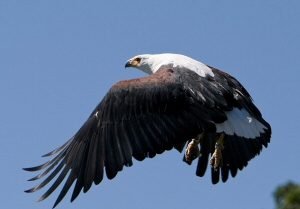 Bird tourism in Kenya has the scope to offer hope for bird conservation. To be successful, conservation efforts must enroll the community people’s support. At present, most bird tourism occurs outside the national parks. Entrance to many sites is free. There is little infrastructure to specifically cater to birdwatchers. It is time to bring birds into the tourism industry. If the legal instruments are inadequate, new protected areas may need to be built that will cater for conservation, revenue generation, and controlled as well as limited exploitation. The Kenya Wildlife service must research the potential for bird tourism and document reserve sites.
Bird tourism in Kenya has the scope to offer hope for bird conservation. To be successful, conservation efforts must enroll the community people’s support. At present, most bird tourism occurs outside the national parks. Entrance to many sites is free. There is little infrastructure to specifically cater to birdwatchers. It is time to bring birds into the tourism industry. If the legal instruments are inadequate, new protected areas may need to be built that will cater for conservation, revenue generation, and controlled as well as limited exploitation. The Kenya Wildlife service must research the potential for bird tourism and document reserve sites.
Conservation challenge
Bird conservation is important for many reasons. It goes in tandem with efforts to promote the conservation of biodiversity and the healthy use of the environment. Throughout the world, conservation problems of birds are linked to pressing issues of the development of humankind. Solutions for bird conservation depend on people-solutions and many of the key issues are beyond the means of traditional conservation. However, in every case, the long-term goal achievement depends on building robust national structures to coordinate appropriate management, education, and research. To this end, the bird-oriented national conservation strategies development can provide both a framework and a tool for shared efforts.
Bird conservation in Kenya
The chief bird conservation challenge in Kenya is habitat destruction. Tracts of grassland and woodland in well-watered parts are being converted to agriculture. The use of fertilizers and pesticides in agriculture is a potential problem. Industrial waste and sewage run into Lake Nakuru, which is a particularly severe threat. In more marginal areas, overstocking and fuelwood removal leads to soil erosion, declining productivity, and encroachment of weak species.
Further research
There has been little comparative research of the characteristics of bird species among the very varied rangeland habitats, or the effects of the changes in these habitats. Precise information about the offshore islands that support many thousands of nesting gulls and terns is also hard to obtain since they are difficult to visit during the breeding season. Furthermore, we need more research to set appropriate seasons, license fees, and bag limits.
References
Fanshawe, J., & Bennun, L. (1991). Bird conservation in Kenya. Creating a national strategy. Bird Conservation International, 1(3), 293-315. doi:10.1017/S0959270900000642
Bird Conservation International , Volume 1 , Issue 3 , September 1991 , pp. 293 – 315

